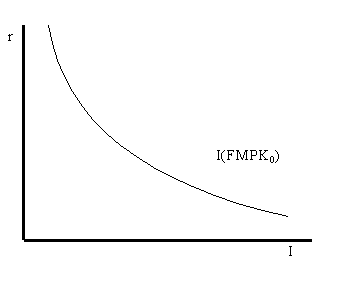
Reading: AB, chapter 4, section 2.
Recall, investment expenditure refers to the purchase of physical capital for the purpose of increasing future output. In the National Income and Product Accounts, investment is broken into business fixed investment (investment in equipment and structures) and inventory investment (purchase of unsold production). In this section we only model the demand for business fixed investment.
Let K(1995) = $100 billion, K(1996) = $110 billion and d = 10%. Net investment is equal to K(1996)-K(1995) = $10 billion. The depreciation of the capital stock over 1995 is 0.10*$100 billion = $10 billion. Then gross investment over 1995 is: I(1995) = net investment + depreciation = $10 billion + $10 billion = $20 billion.
Firms invest in physical capital when they want to expand the scope of operation and production. Firms decide to take on investment projects when the expected benefits of investment (returns to investment) outweigh the expected costs. This decision is called the capital budgeting decision and it is discussed in great detail in courses in financial economics. For our purposes, we simply need to recognize that firms invest when the expected net benefits from investment projects is positive. The textbook goes into a detailed discussion of how firms weigh the costs and benefits of an investment project and I will just summarize the main results here:


As the above graphs shows, for a fixed level of FMPK desired investment is low when the real interest rate, r, is high and desired investment is high when the real interest rate is low. The investment graph will shift up and to the right when FMPK increases and it will shift down and to the left when FMPK decreases.
[Previous Slide] [Contents for Lecture 5] [Slides from Lectures] [301 Homepage]
Last Updated July 18, 1996 by Eric Zivot